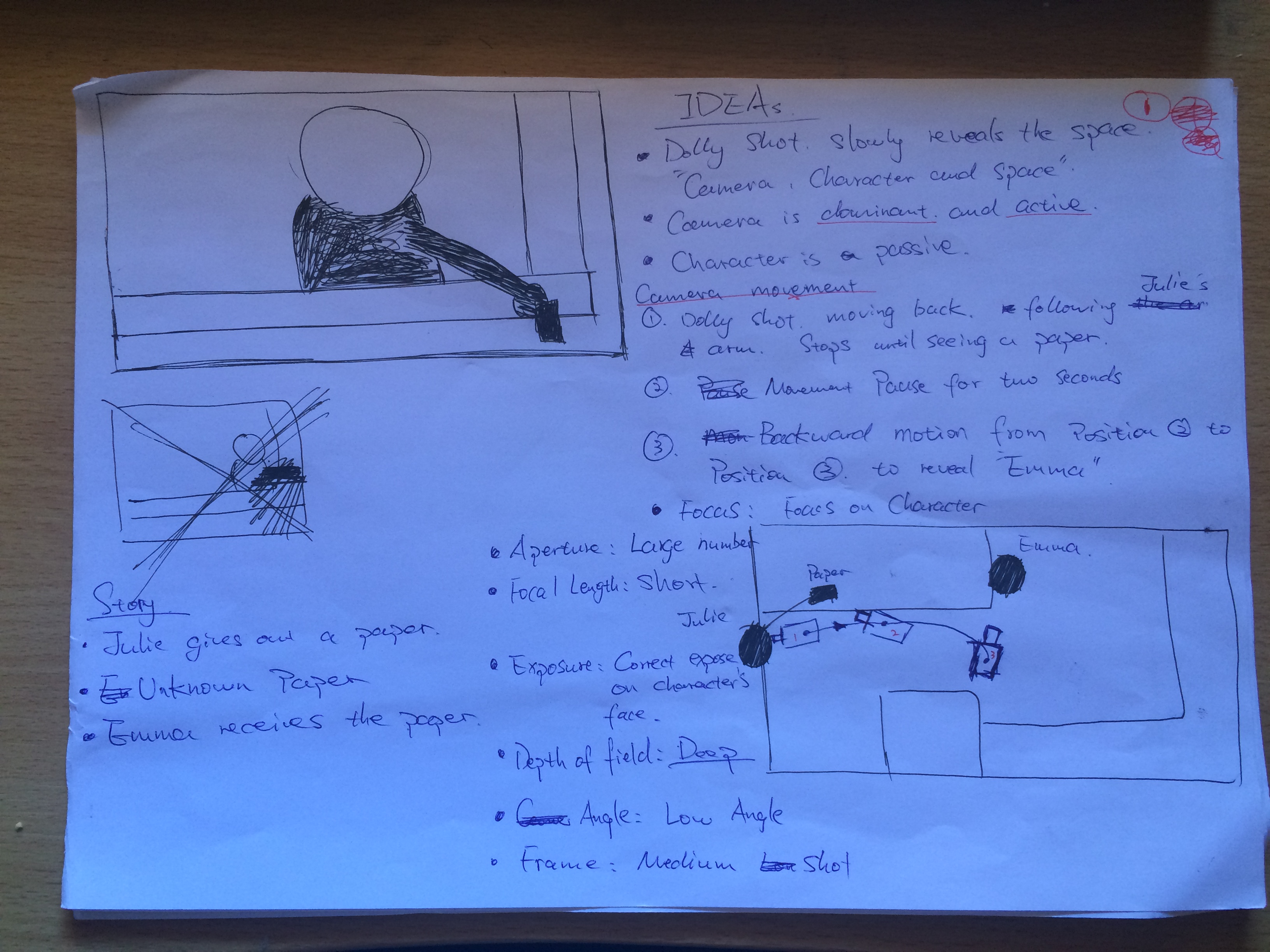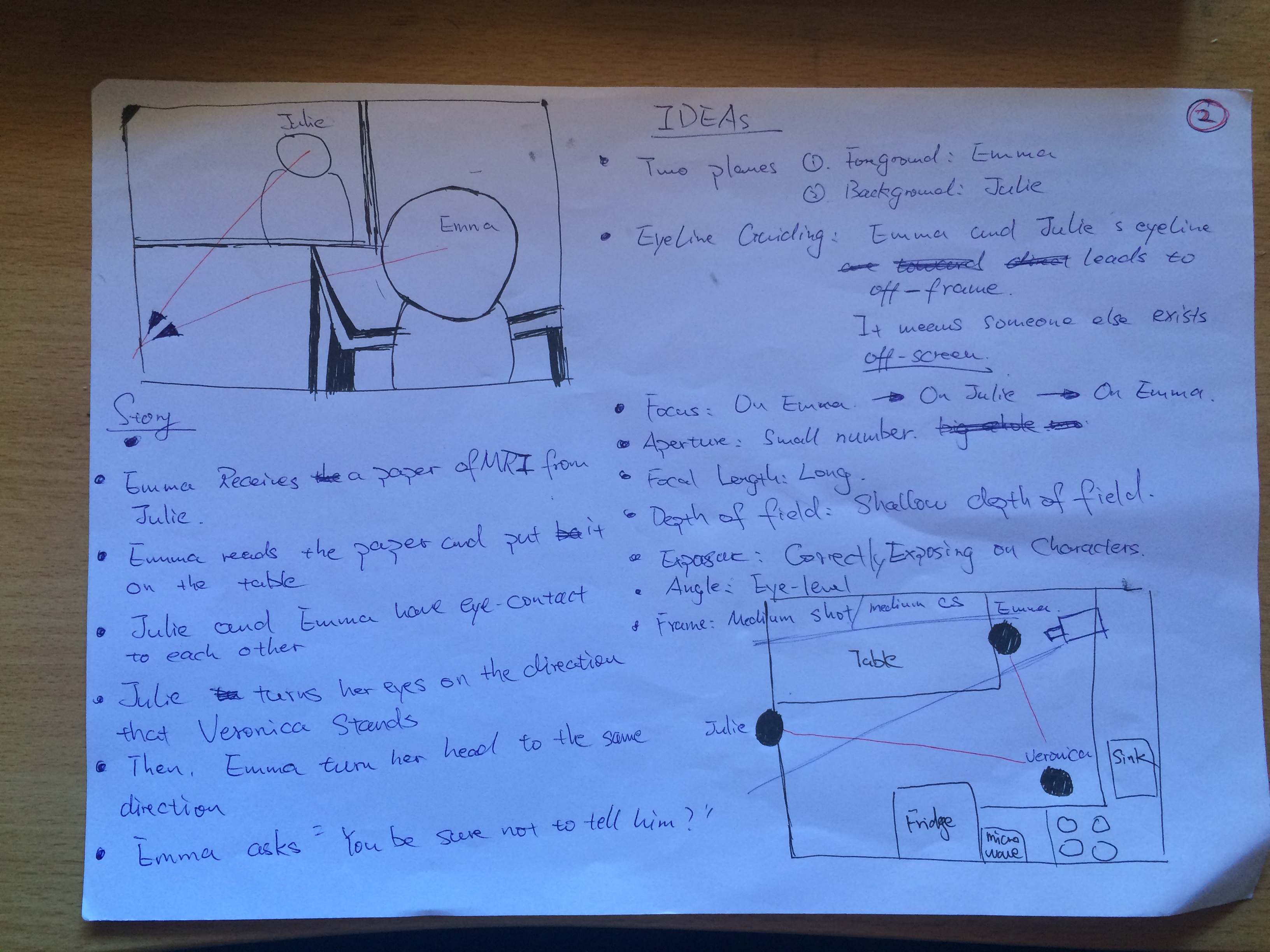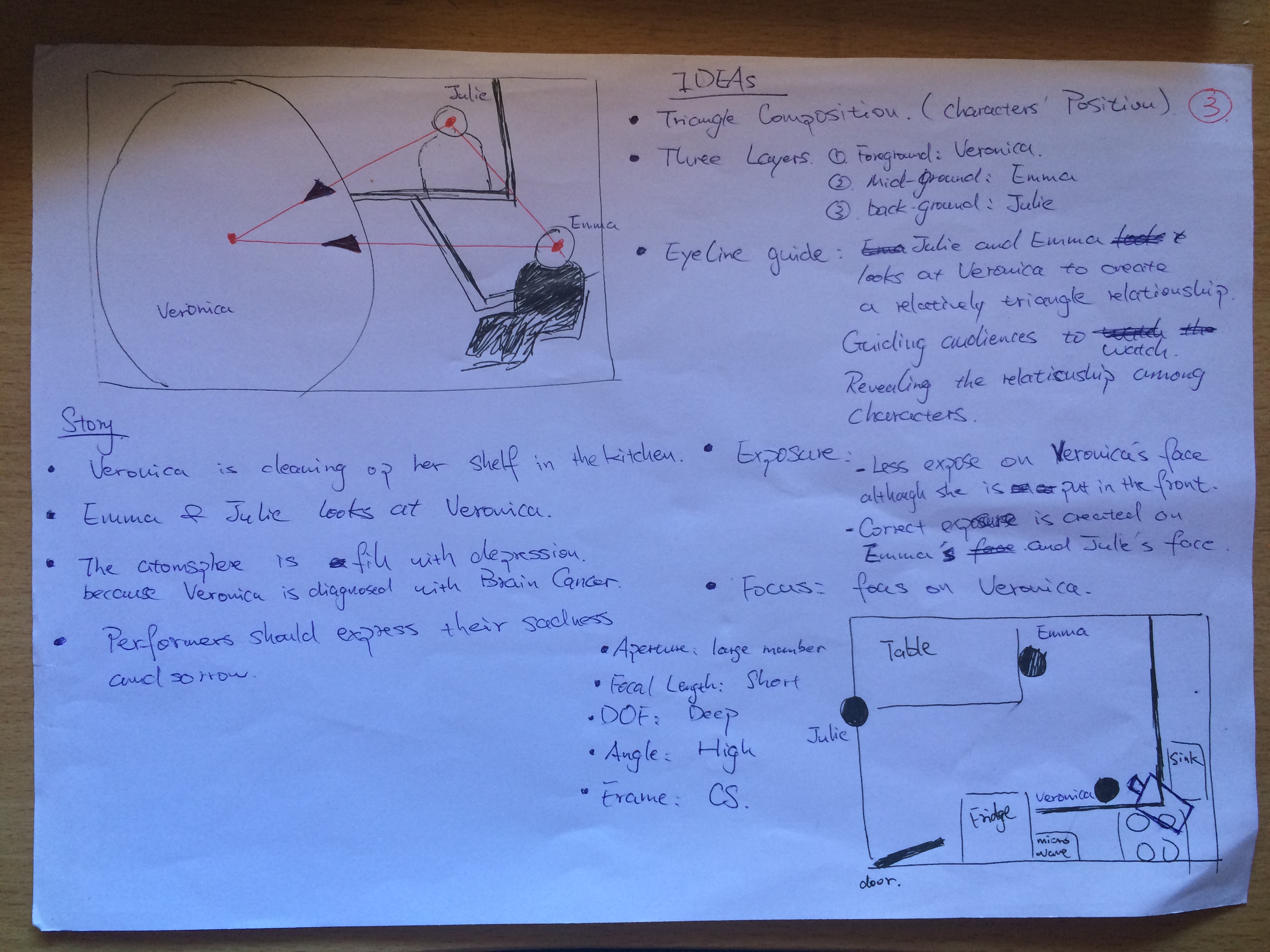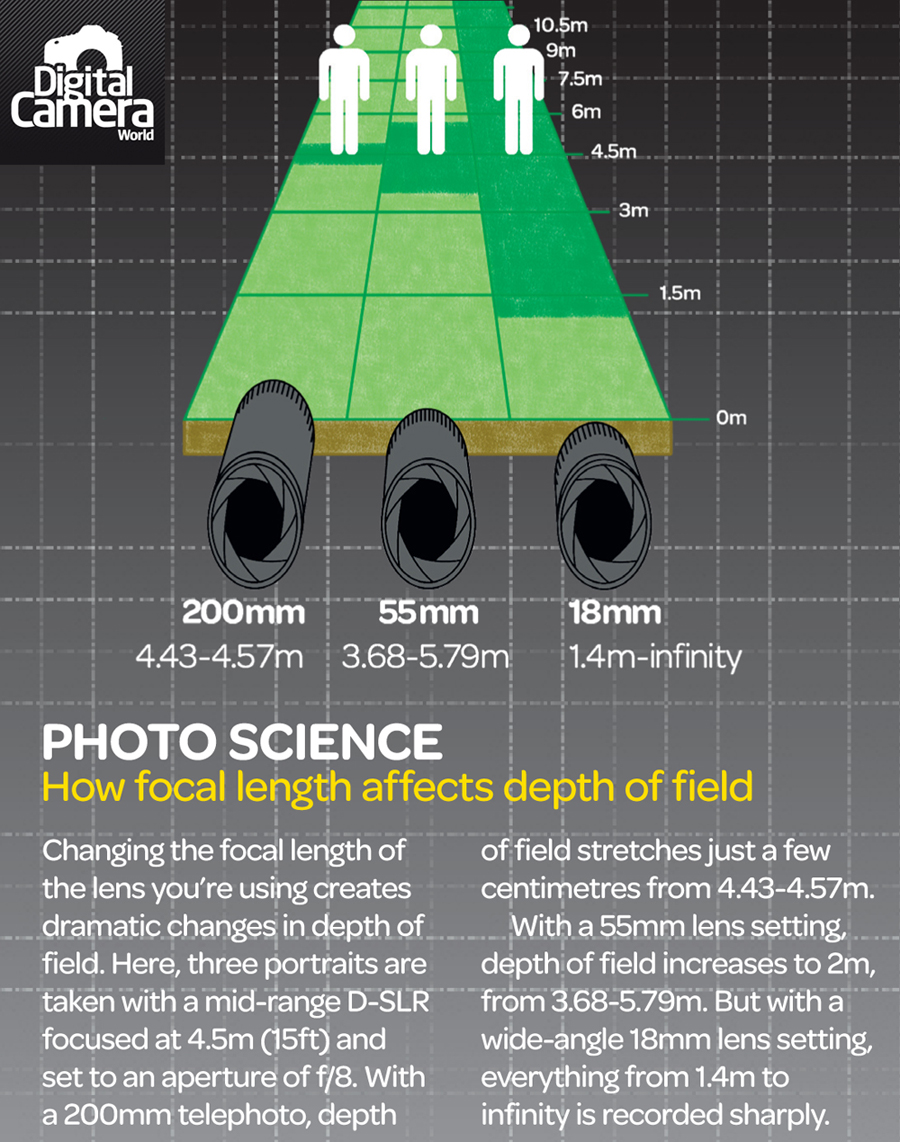In the scene of Brain Cancer, the last shot is notable. It is very interesting to discuss what kind of a message that was delivered through cinematic language.
First of all, I intend to make a handheld shot from Veronica’s point of view, but this is not an actual point of view but her imagination.The purpose of this shot is to let audience into Veronica’s mind, a brain cancer patient’s world. All I do is trying to experience. I start to think of what a dying person would do at the end of his/her life. Does she/he care the result, face it or ignore it? Is she/he aware of how people think?What is she/he, maybe lost, maybe happy, or maybe nothing?

So, this shot starts at the position where Veronica stands as a her point of view. Then I start to move forward with camera act like a walking person approaching to the table. Staying on the MRI paper for couple seconds aims to create a good flow of storytelling. In my opinions, even though the individual is a dying person, he/she is unable to completely get rid of the trauma on her/his psychological level. Therefore, I chose to stares on the MRI results, because the cancer still matters.
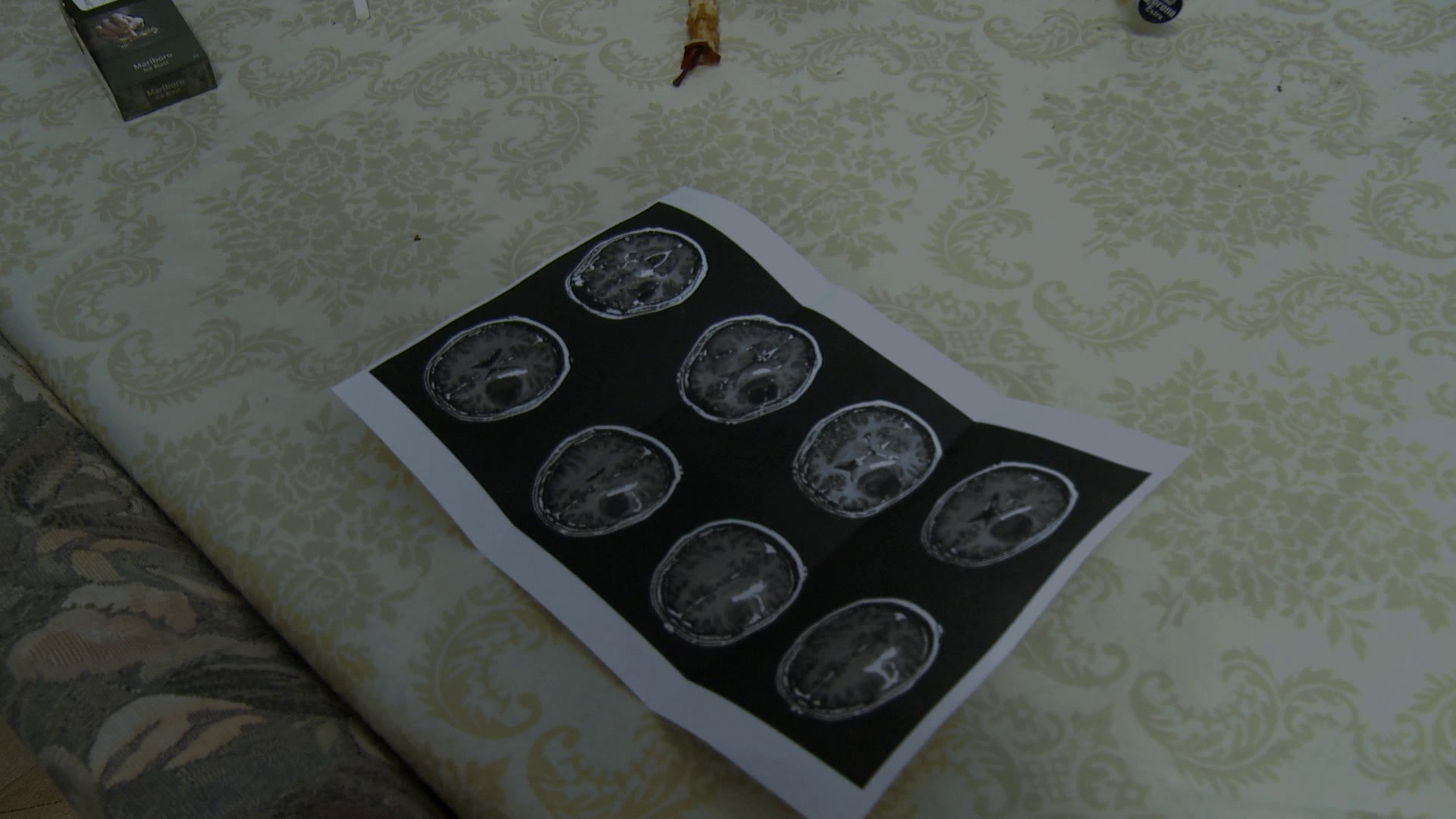
The frame leaves the paper and slowly tilts up. Interestingly, the next movement that I am inspired by a famous Hong Kong filmmaker, Johnnie To, who made this particular shot in his film ‘Life Without Principle (2011)’. As I assume this shot that is Veronica’s imagination rather than a merely POV. So the camera is freely flying around the space. I take the camera to pass by Julie’s face and the camera is going through the windows and Julie to the dark behind her. Conventionally, it is not allowed to do this as a POV shot because the shot represents an individual. However, this is an individual’s imagination, so it is freewill. Finally, I think this maybe a good ending for this scene.

However, when I show to someone else, some of them do not reckon this is Veronica’s point of view shot, nothing more than a normal shot. That really interests me as I want to know what make its meaning change. It is notable that Robin asks me why I keep the stillness of at the beginning of the shot rather than starting to move immediately. In my intention, this short stillness is created for a smooth transition between shots. The previous is a objective shot framing three characters together, then it is cut to a subjective shot of Veronica’s point of view. This stillness is going to make audience believe that the shot is subjective. It is because the change from stillness to mobile represents the essence of this shot has been different.


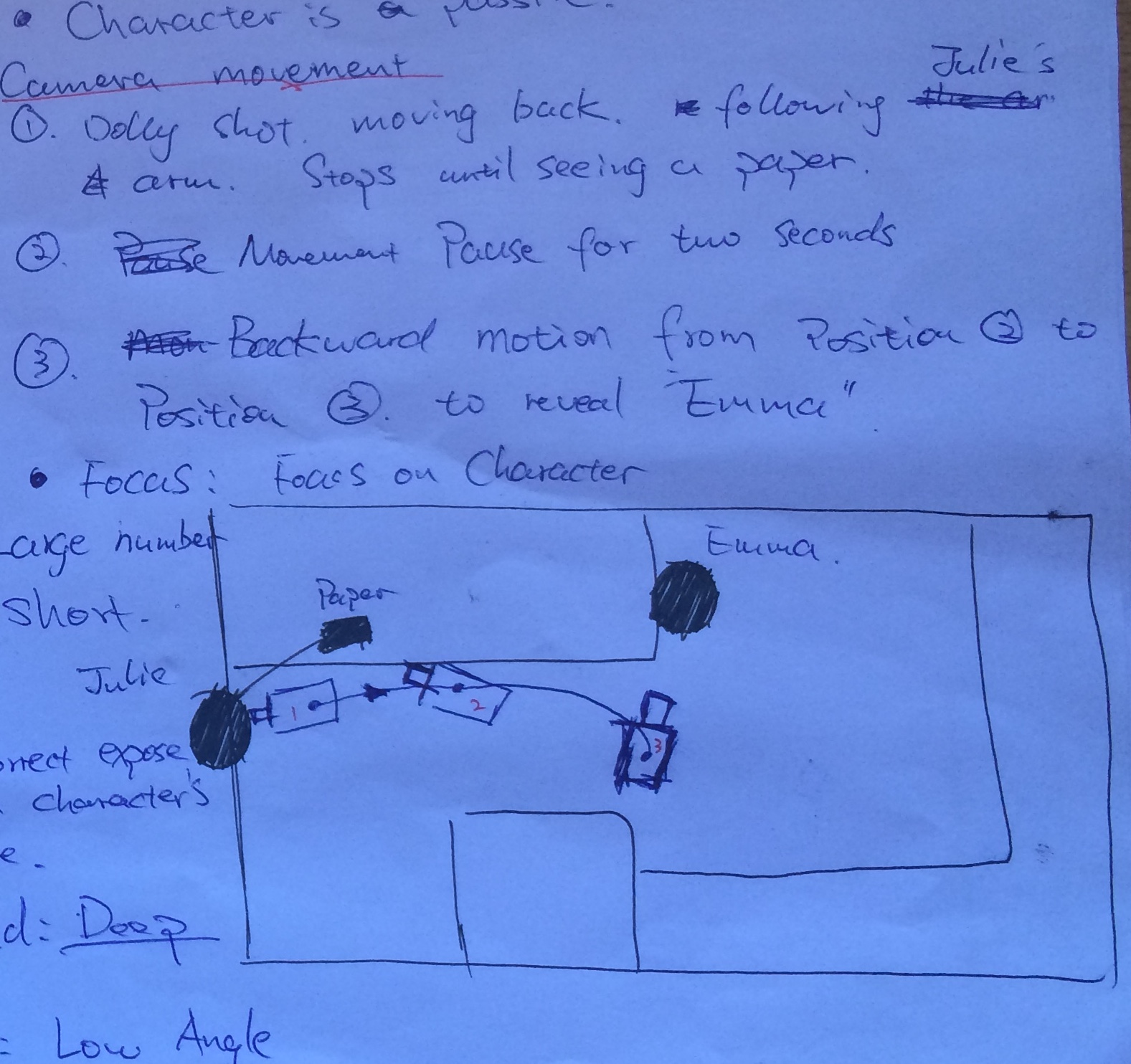 figure 1
figure 1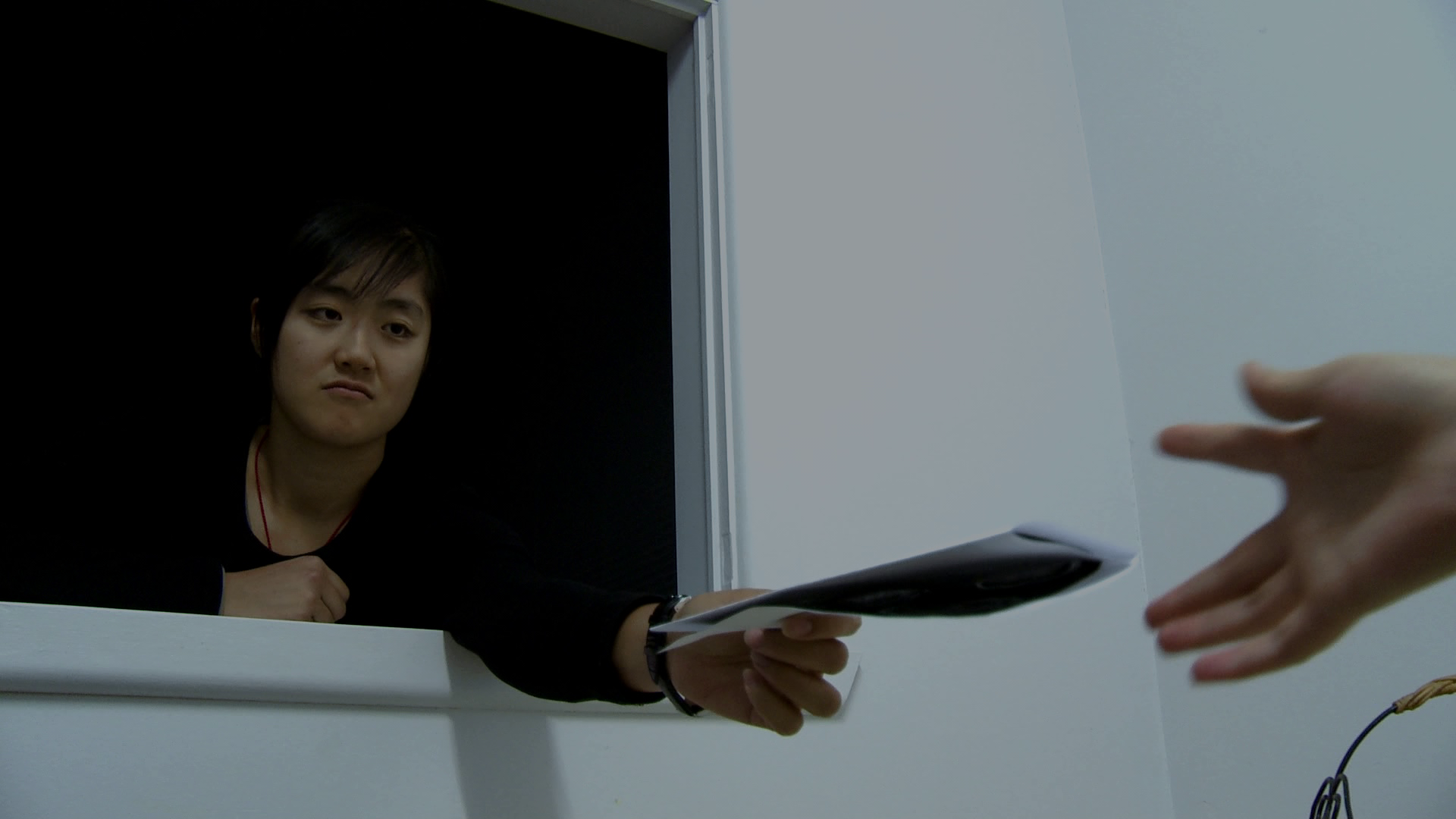
 figure 3
figure 3